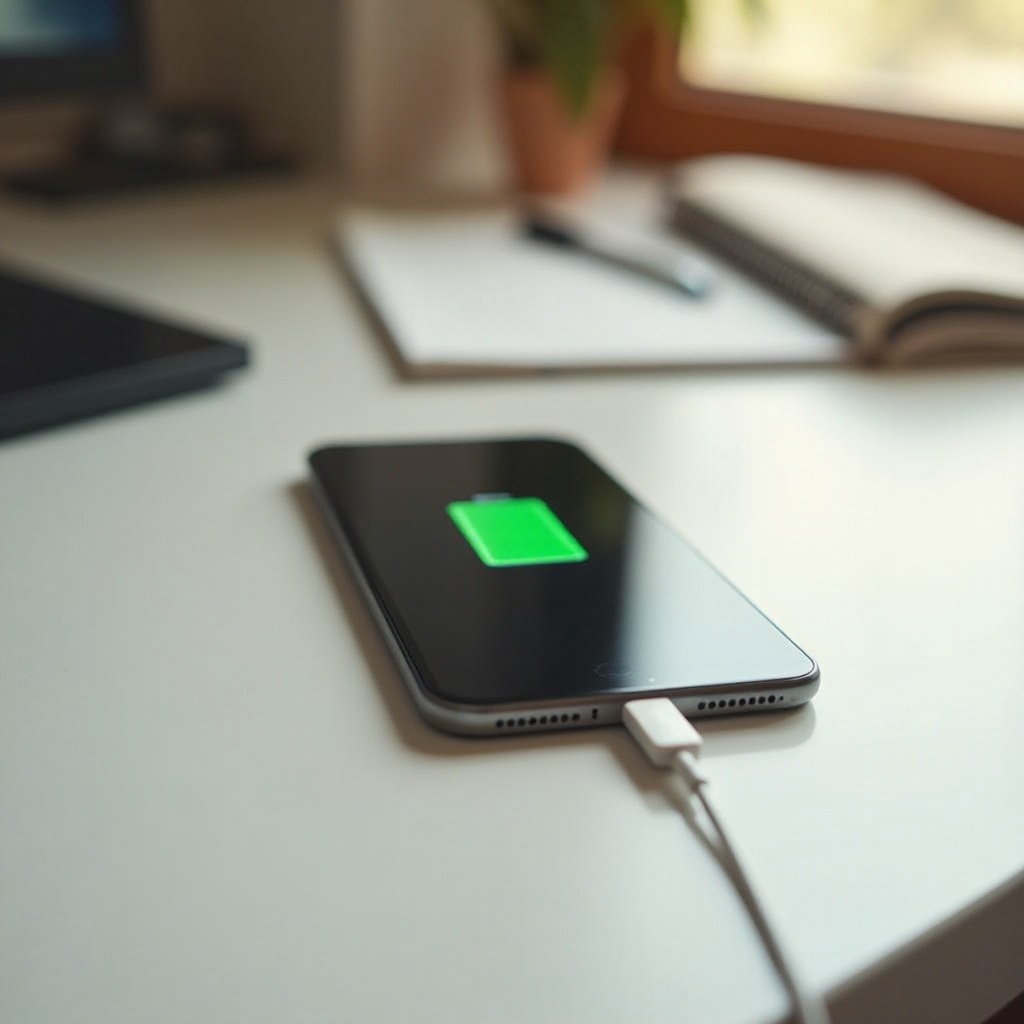Introduction
A dead phone taking ages to charge can be frustrating. Whether you rely on your phone for work, communication, or simply staying entertained, this issue can put a wrench in your plans. Let’s explore the reasons behind slow charging times and how to effectively address each one. This comprehensive guide covers common causes, troubleshooting steps, and solutions to get your phone back to its optimal charging speed.

Common Causes of Slow Charging
There are several reasons your dead phone might be slow to charge. Here, we delve into the most frequent culprits behind this common issue.
Faulty Charging Cable
A damaged or inferior charging cable can severely slow down the charging rate. Common issues include internal wire fractures, bent connectors, or low-quality cables that cannot handle sufficient power.
Worn Out Charger Adapter
Another possible cause is the charger adapter itself. An aged or faulty adapter may not supply the necessary current needed for efficient charging, resulting in prolonged charging times.
USB Port Issues
The USB port on your phone can accumulate dust, debris, or suffer from wear and tear over time. Such issues can inhibit a proper connection between the phone and charging cable, causing slow charge rates.
Battery Health
The health of your phone’s battery plays a pivotal role in charging efficiency. Over time, batteries degrade and their ability to hold and take charge dwindles, leading to slower than usual charging speeds.
Troubleshooting Steps
If you’re facing slow charging issues, the following steps can help you identify and resolve the problem effectively.
Checking and Replacing the Charging Cable
Ensure that your charging cable is in good condition. If you notice any visible wear or damage, replace the cable with a high-quality alternative. Opt for manufacturer-recommended cables to guarantee compatibility and efficiency.
Using a Different Charger Adapter
Sometimes, the charger adapter may be the issue. Borrow a friend’s adapter or use another one you have at home and see if the charging speed improves. Always use adapters that are approved for your phone’s model.
Inspecting and Cleaning the USB Port
Examine the USB port on your phone for signs of dirt or blockage. Use a small, soft brush or compressed air to clean out any debris gently. Make sure the port is free of any obstructions to ensure a snug fit for the charging cable.
Assessing Battery Health through Diagnostic Tools
Use your phone’s built-in diagnostic tools or download a reputable app to assess the health of your battery. If diagnostics indicate the battery is degraded, consider having it replaced by an authorized service center.

Software and Firmware Issues
Software and firmware problems can sometimes be the hidden cause behind slow charging. Keeping your device updated can resolve such issues. Updates often include bug fixes and enhancements for better performance and battery management.
Importance of Updating to the Latest Software
Manufacturers often provide software updates that can fix bugs, improve battery performance, and enhance the overall functionality of your device. Make sure your phone has the latest software updates installed.
Factory Reset as a Last Resort
If all else fails, a factory reset might be necessary. This process wipes the phone clean and reinstalls the operating system. However, back up all necessary data before proceeding, as this action is irreversible.

Environmental Factors
External conditions can also influence charging speed. Awareness and preventive measures can help maintain optimal charging times. For example, charging your device in moderate temperatures can keep the battery from stressing under extreme conditions.
Impact of Temperature on Charging
Extreme temperatures, either too hot or too cold, can affect a phone’s charging capabilities. Charge your phone in an environment that is neither too warm nor too cold for the best results.
Avoiding Overcharging and Overuse
Overcharging and frequent use while charging can stress the battery. Avoid leaving your phone plugged in once it’s fully charged and try to minimize usage while it’s on the charger.
When to Seek Professional Help
If you’ve tried all the troubleshooting steps and your phone still charges slowly, it’s time to seek professional assistance. Visit an authorized service center for a comprehensive diagnostic and repair. Professionals can accurately diagnose and fix issues that might be beyond a layperson’s scope.
Conclusion
Addressing why a dead phone takes so long to charge involves inspecting cables, adapters, and USB ports, as well as considering software updates and environmental factors. When in doubt, seek professional help.
Frequently Asked Questions
Why does my phone charge slowly and turn on while charging?
This might be due to a faulty charging cable, adapter, or battery issues. Inspect and replace accessories as needed and consider seeking professional evaluation.
How do I speed up charging for a dead phone?
Use a high-quality charging cable and adapter, keep the USB port clean, update software regularly, and minimize phone usage while charging.
What should I do if changing cables and adapters doesn’t work?
If replacing cables and adapters doesn’t solve the problem, check for software updates or perform a factory reset. If the issue persists, consult a professional technician.